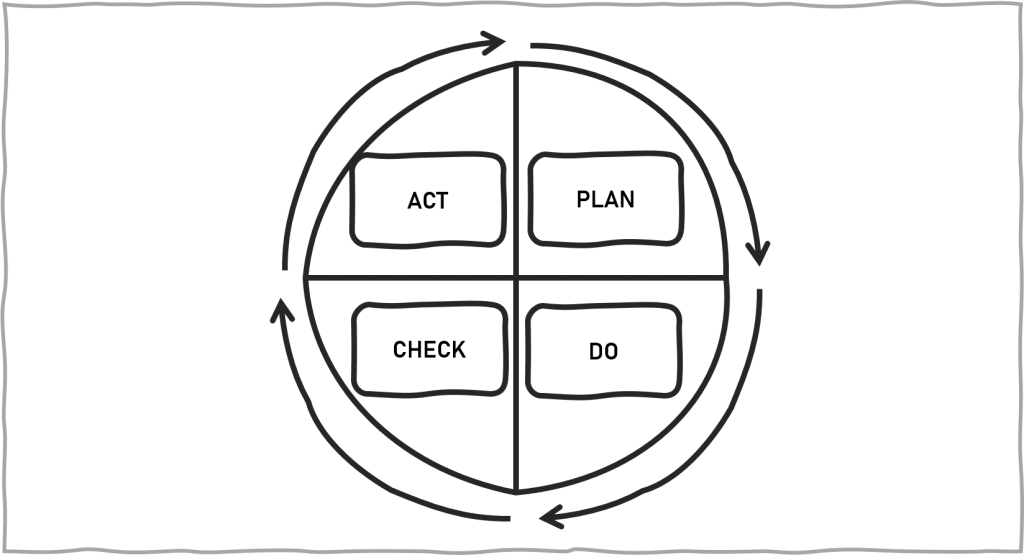There are many strategies that you can undertake if you want to become a better manager. This article is going to focus on one particularly powerful approach; the CCC method.
Firstly, do you want to become a better manager?
If ‘yes’, what would this mean to you?
Dealing with people more effectively? Better planning? Improved delivery of change? More consistent execution of business processes? Better results (quality, profit, on time delivery etc…)?
There are quite a few reasons to become better, including the fact that you become more attractive to the marketplace as a result of the process.
Understand your current position
Before I share with you the CCC process let me ask you about your weaknesses; do you know what they are? Being brutally honest with ourselves is the first step in this transformation. A great way to capture this is to perform a SWOT analysis on our own performance and abilities.
If you haven’t carried out a SWOT analysis before then you simply grab a sheet of paper, split it up into four boxes and place these headings in the boxes – Strengths, Weaknesses, Opportunities and Threats.

For each category you brainstorm what these headings mean to you:
- Strengths – what are you (exceptionally) good at?
- Weaknesses – what are your weak points / Achilles heal?
- Opportunities – what opportunities are all around you that you could take advantage of?
- Threats – what ‘dangers’ are there around you that you need to mitigate for?
Drawing up this list should give you a good perspective of your own talents and where there is a need for action.
The CCC method
The CCC method (also known as the ‘3C’ method) is a simple yet powerful approach. The Cs stand for:
- Concern
- Cause
- Countermeasure
Fundamentally you use the method this way:
- Identify things / issues / situations that concern you.
- For each concern you identify the root cause of the situation, what is really causing the concern (and not just the first thing you think of).
- For each root cause you identify an action to resolve the situation – the countermeasure.
The method works so well because you can capture the concerns when you see them and then later deal with the cause and countermeasure. The action plan doesn’t have to materialise from a lengthy improvement workshop, you can nibble away in true Kaizen fashion.
Applying CCC to our SWOT analysis
So, how do you link the two methods together?
Simply review the contents of your SWOT analysis and ask yourself if you have any concerns about any of the items in the list. If you have a concern then list it down and start the CCC process at your leisure.
Generically speaking the questions will look something like these:
- Which strengths are you concerned aren’t strong enough?
- Which weaknesses are you concerned you aren’t addressing?
- Which opportunities are you concerned you aren’t chasing after?
- Which threats are you concerned could derail you?
From here you should have a list of concerns that if addressed (by identifying the cause and the countermeasure) will improve your performance and results as a manager (and, dare I say it, as a leader too).
It’s all about becoming better
The good news (as with everything Kaizen and Continuous Improvement) is that you don’t have to get this perfectly right the first time you embrace the countermeasures that you have defined.
This is all about becoming better and adding in the PDCA cycle to our SWOT – CCC approach helps here.

To summarise this approach:
- You plan your improvement (in this case, your countermeasure).
- You do something.
- You stop and check the the results.
- You decide how you want to act differently going forward to get a better result.
The learning that can come from this cycle is one of the best things you can do for your career. Stop regularly and check the direction and rate of progress being made. If you aren’t happy (is that another concern?) do something about it.
Pulling this together
I hope that you can see from the above methodology that you can improve your performance as a manager by linking the SWOT analysis with the CCC method and using the PDCA cycle to ensure that you get the results you want.
A key point to all of this is to not become comfortable with your shortcomings. We all have them (I have my own list!) but it is what we do with that list that makes the difference.
If you look forward one year from now will you be in a better situation / position? I hope so.
When I am working with different businesses I do see the different strategies that people undertake to cope with the changing work environment. Those that bury their heads in the sand tend not to be the ones that embrace the changes the business need to make.
I realise that this article is recommending that you have an honest grown up conversation with yourself. If you don’t feel ready to do that then start small. Take one thing that you know isn’t up to scratch and add that to your list of concerns. Deal with that one and then add the next.
This doesn’t need to be some kind of Spartan adventure of beating yourself up and forcing change. Take it steady and nibble your way through the things you find difficult by coming up with a better strategy to handle them.
Enjoy the process of personal change that can come alongside business improvement.
Giles
